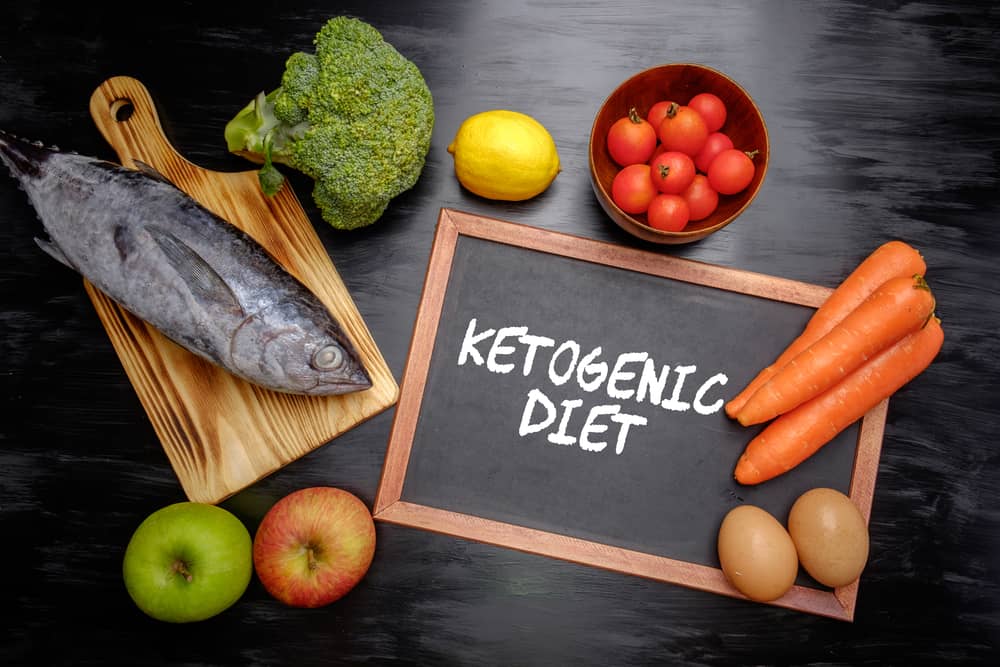Contents:
- Medical Video: A Sample Ketogenic Diet Meal Plan
- Guides go on the keto diet
- Foods that are avoided in the keto diet
- Foods that are recommended in the keto diet
- Design a keto diet for everyday
- Menu 1
- Breakfast
- Lunch
- Dinner
- Menu 2
- Menu 3
Medical Video: A Sample Ketogenic Diet Meal Plan
The keto or ketogenic diet is a diet that adopts a low-carbohydrate and high-fat diet. Some studies that support this method say the ketogenic diet can lose weight in a short time but still increase energy.Some other benefits that can be obtained through the keto diet include preventing the risk of diabetes, cancer, epilepsy, and Alzheimer's. So, how do you design a keto diet for everyday?
Guides go on the keto diet
As explained above, the keto diet focuses on foods that are high in fat and low in carbohydrates and high in fat. If normal fat consumption is limited to about 20-30% of daily needs, the ketogenic diet recommends fat intake up to 60-70%.
Intake of carbohydrate sources is also greatly reduced to only 5% of daily needs in general. Instead, carbohydrates are exchanged for high foodprotein to meet 20 percent of the body's needs.
This drastic reduction in carbohydrates makes the body enter a phase called ketosis. The lack of carbohydrate intake makes the body not produce enough blood sugar to be burned as energy. As a result, the body begins to break up the fat deposits as a backup energy source.
Foods that are avoided in the keto diet
Here is a list of high carbohydrate foods that need to be reduced or eliminated on the ketogenic diet:
- Sweet foods: Sodas, fruit juices, smoothies, cakes, ice cream, sweets, etc.
- Grains or flour: Wheat-based products, rice, pasta, cereals, etc.
- Fruit: All fruits, except a small portion of fruit like strawberries.
- Peas or peas: Peas, kidney beans, beans, etc.
- Vegetables and root bulbs: Potatoes, sweet potatoes, carrots, etc.
- Low fat or diet products: These products often contain high carbohydrates.
- Some spices or sauces: Products contain lots of sugar and unhealthy fats.
- Unhealthy fat: Limit intake of processed vegetable oils, mayonnaise, etc.
- Alcohol
- Sugar-free diet foods: Contain high artificial sugar levels, which can affect the ketone process
Foods that are recommended in the keto diet
The following types of foods high in fat are recommended to be included in your keto diet menu, namely:
- Meat: Red meat, steak, ham, sausage, bacon, chicken and turkey.
- Fatty fish: salmon, tuna, sardines and mackerel.
- Egg
- Butter and cream
- Unprocessed cheese (cheddar, goat, cream, blue, or mozzarella).
- Nuts and seeds: Almonds, walnuts, chia seeds, etc.
- Healthy oils: Extra virgin oil, coconut oil and avocado oil.
- Avocado, strawberry
- Low-carbohydrate vegetables: Green vegetables, tomatoes, onions, peppers, etc.
- Seasoning: You can use salt, pepper and various healthy herbs and spices.
- Full fat yogurt, full fat milk
- 90% dark chocolate
Design a keto diet for everyday
The important thing to remember in preparing the keto diet is the division between carbohydrates, proteins, and fats: 75% fat, 20% protein and 5% carbohydrate. Also, use which food guidelines should be avoided and which ones are recommended.
The following keto diet menu choices that you can practice at home.
Menu 1
Breakfast
Black coffee without creamer, sugar, sweetener, milk (Can be added coconut oil or butter / margarine; can also be "sweetened" with ginger / cinnamon / vanilla / chocolate powder)
This breakfast menu contains 84 percent fat, 12 percent protein, and 2 percent carbo.
Lunch
- Grilled chicken breast with butter (butter) or olive oil, season with garlic, pepper and salt, and other herbs according to taste.
From this menu you get 69 percent fat, 30 percent protein, and 1 percent carbohydrate.
Dinner
- Setup beef with tomatoes, grated cheese, cream, leeks, butter.
The nutrients you get from this dinner are 73 percent fat, 23 percent protein, and 3 percent carbohydrate.
Menu 2
Breakfast : Milkshake or full fat milk
Lunch : Vegetable salad added a little piece of shrimp or fish, olive oil, lemon juice, mint leaves, peppers, sesame seeds and cheese
Dinner : Vegetable salad plus chunks of meat, celery, peppers, tomatoes and cheese
Snack : Avocados, apples, and a handful of nuts
Menu 3
Breakfast : High fat meats like beef or mutton, add eggs, tomatoes, peppers, celery and carrots
Lunch : Vegetable salad, use lemon juice, mint leaves, almonds, sesame seeds, lettuce, mushrooms with olive oil (you can add pieces of chicken breast or shrimp and a sprinkling of cheese)
Dinner : Sea fish, asparagus, celery, spices, shallots, garlic, leeks, cheese, lettuce, peppers and broccoli
Snack : A handful of nuts and strawberries
Remember, you can design your own keto diet menu by sticking to the principle 75% fat, 20% protein and 5% carbohydrate.












